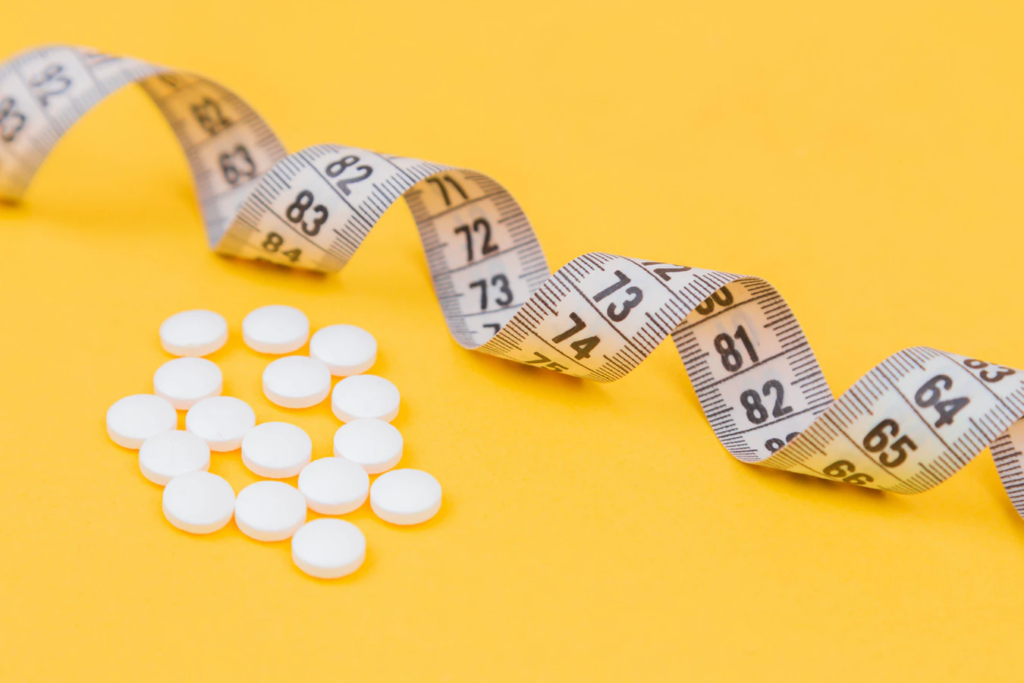Introduction
In the New England Journal of Medicine, a recent study found significant weight loss with a weekly intake of Semaglutide in patients with obesity. The results, which show that weight loss was 10.3% higher at 68 weeks in people who were not obese or overweight than in the placebo. Study participants treated with a single dose (1.5 mg/day) of the Stage 1 supplement lost about 15% of body weight, while the average weight loss from placebo (2.4%) was less than 1% (0.6%). The corresponding diet and exercise are just as effective as the single-dose placebo for overweight and obese participants, said the report. Other STEP studies investigating the effects of one or more doses of STEP on weight gain and body mass index (BMI) have already been reported. [Sources: 1, 6, 11, 13]

How to culture vascularized & immunocompetent 3D models in a standard Multiwell
Results from Semaglutide in obese patients
In the STEP program, more than half of those treated with a single dose (1.5 mg/day) of the dietary supplement level 1 achieved a weight loss of at least 10% of their body weight compared to placebo. STEP programs resulted in less than one-third of people with overweight or obese BMI gaining less than 1% compared to placebo. Step program and a higher proportion were achieved by treating them with one or more doses of STEP than with the placebo or placebo were given in combination with no diet or exercise. [Sources: 4]
More than half of those treated with a single dose (1.5 mg/day) of the level 1 dietary supplements achieved a weight loss of at least 10% of their body weight compared to placebo. In the STEP program, a higher proportion (29.2% and 28.4%, respectively) was achieved by treating them with one or more doses of STEP than with placebo or placebo, which were not administered in combination with any diet or exercise. Less than one-third (37.3%) or about half (47.6%) of people with an overweight or obese BMI gain 1% (0.7-2.1% compared to placebo, and less than one quarter (25.8 %-26.9%). It achieved less than two-thirds (63.0% / year) or less or about three-quarters (73% / year) of all treated weight loss of less than one-third (-1 / 4 – 3% versus 2 / 5% in the control group, but more than on average 3 / 6 – 7% in obese and overweight individuals). [Sources: 4]
In adults who were overweight or obese, the one- to weekly subcutaneous use of semaglutide resulted in significantly greater weight loss compared to placebo, which was used for 68 weeks. It increased the average weight loss by 10.3 percentage points for those who used intensive behavioral therapy in combination with one or more doses of the level 1 dietary supplement (1.5 mg/day) and exercise (2.0-3.1%). In adults with overweight/obesity: Once a week subcutaneous semen lutides compared to placebo or as part of a simple diet and/or exercise program resulted in weight gain of at least 10% (10-13%). In overweight or obese adults: In adolescents with overweight and obesity, a monthly dose of subcutaneous semen lutides (0.6 mg per day compared to placebo) or a combination of a dose (3-4 mg/day) of the dietary supplement stage 2 (4-6 mg – 7.2 mg), which results in significant weight loss over 68 weeks in adults with overweight and obesity: a daily dose or the intake of once-monthly subcutaneous semen lutide (5-8 mg). [Sources: 3] Semaglutide and diabetes
The study participants were men and women between 18 and 65 years of age with a BMI of at least 25. The study was conducted in adults with concomitant weight-related diseases such as type 1 and type 2 diabetes, hypertension, cardiovascular disease and diabetes mellitus, and obesity. All were enrolled because of their risk of joining the study. And the comorbidity related to her existing condition, which included type 2 diabetes and high blood pressure, and not. [Sources: 8, 10]
Those who were overweight or obese, including those with prediabetes, hypertension, and obstructive sleep apnea, were recommended to have sedentary exercise therapy of at least 30 minutes a day, once or weekly. Those who took part in the study and those who did not take part were also given advice on diet and fitness. [Sources: 0, 12]
Previous results from Phase 2 studies have found a positive association between sedentary exercise therapy and weight loss in adults with obesity, but it has not been confirmed that adult obesity can be achieved by using a once-weekly sedative such as sedation or exercise with weight loss. [Sources: 2, 7]
This double-blind study randomly assigned adults with obesity and diabetes to step up or down in the form of a once-weekly sedative or exercise therapy. The study examined the effect of once-weekly sedation on weight loss compared to placebo in adult obese or diabetic patients with a history of diabetes. [Sources: 5, 9]
References
[0]: https://www.drugtopics.com/view/study-shows-clinical-benefit-with-once-weekly-semaglutide-in-patients-with-obesity
[1]: https://www.physiciansweekly.com/weekly-semaglutide-injection-effective-in-weight-loss-trial/
[2]: https://www.nejm.org/doi/full/10.1056/NEJMoa2032183
[3]: https://ja.ma/3dK1j3Q
[4]: https://www.finanznachrichten.de/nachrichten-2020-12/51548412-novo-nordisk-a-s-novo-nordisk-files-for-eu-regulatory-approval-of-once-weekly-semaglutide-2-4-mg-for-weight-management-399.htm
[5]: https://pipelinereview.com/index.php/2020060574880/Proteins-and-Peptides/Novo-Nordisk-reports-weight-loss-of-14.9-16.9-if-taken-as-intended-in-STEP-1-trial.html
[6]: https://medicaldialogues.in/diabetes-endocrinology/news/semaglutide-with-exercise-and-diet-can-cause-significant-weight-loss-in-obese-nejm-74468
[7]: https://www.ajmc.com/view/trial-finds-semaglutide-with-lifestyle-intervention-reduces-body-weight-by-nearly-15-
[8]: https://hospitalhealthcare.com/endocrinology/significant-weight-loss-achieved-by-semaglutide-in-obese-patients-without-diabetes/
[9]: https://www.irishexaminer.com/news/arid-40227398.html
[10]: https://www.pharmiweb.com/press-release/2020-11-10/semaglutide-24-mg-injection-demonstrated-significant-weight-loss-versus-placebo-when-added-to-intensive-behavioural-therapy
FAQ
A recent study reported on the use of semaglutide for weight loss. The results showed a notable difference in weight loss for patients receiving the supplement compared to a placebo. After 68 weeks, the weight loss recorded was 10.3% higher in the semaglutide group. Participants who were given a 1.5 mg/day dose lost approximately 15% of their body weight. In contrast, an average weight loss of 0.6% was seen in the placebo group. More than half of the individuals treated with the 1.5 mg/day dose achieved a weight loss of at least 10% of their body weight. This was a higher proportion than the placebo group. One- to weekly subcutaneous use of the treatment resulted in greater weight loss over the 68-week period when compared to placebo.
The study included both men and women. Participants were between 18 and 65 years of age. A body mass index (BMI) of 25 or higher was a requirement for inclusion. The study focused on adults who had other weight-related health conditions. These concomitant diseases included type 1 and type 2 diabetes. High blood pressure, cardiovascular disease, obesity, and diabetes mellitus were also listed as conditions of the participants. Individuals were enrolled based on the risk associated with their existing conditions.
Advice on diet and fitness was provided to those who took part in the study. This advice was also given to individuals who did not take part. Participants with overweight or obesity were given specific recommendations. This group included people with conditions such as prediabetes, high blood pressure, and obstructive sleep apnea. An exercise therapy of at least 30 minutes a day was recommended. In one part of the study, subcutaneous semaglutide was used over 68 weeks. This resulted in an average weight loss increase of 10.3 percentage points for individuals who used structured behavioral therapy combined with the supplement and exercise.
The effect of diet and exercise was mentioned in the report. These lifestyle changes were found to be as effective as the placebo. The average weight loss from the placebo was 0.6%. In comparison, participants receiving a 1.5 mg/day dose of the supplement lost approximately 15% of their body weight. Other STEP studies were also compared. These studies looked at outcomes for individuals treated with one or more doses of STEP. The comparison groups were given either a placebo or a placebo combined with no diet or exercise. The group receiving the supplement doses achieved a higher proportion of weight loss.





